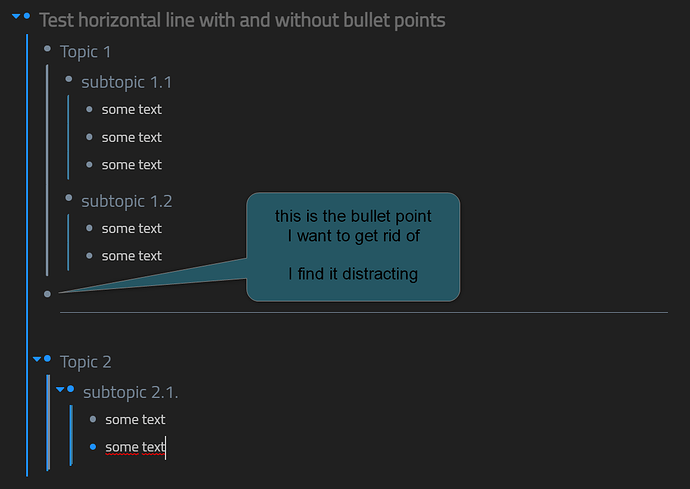Thanks for your reply.
I am used to outliners (used and still use Checkvist heavily) and like the bullet points. So I don’t want to get rid of all the bullet points but only for blocks that I use as a seperator ---
This way I could separate the “ideas” similar to the example scurra initially posted. It is simply an aesthetic attempt because I really find the bullet point in front of the horizontal line “ugly”.
I am very bad at hacking css and don’t know if this even would be possible.
